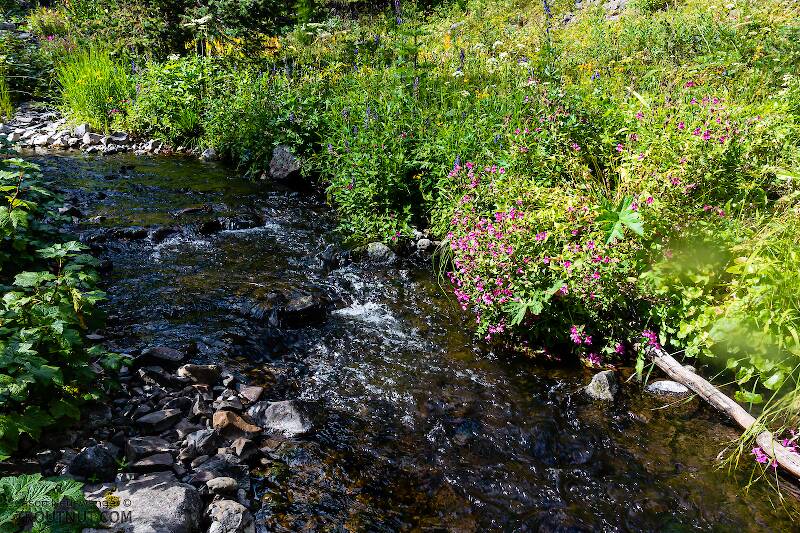
Salmonflies
Pteronarcys californica
The giant Salmonflies of the Western mountains are legendary for their proclivity to elicit consistent dry-fly action and ferocious strikes.


Mayfly Species Leucrocuta juno
Species Range
Physical description
Most physical descriptions on Troutnut are direct or slightly edited quotes from the original scientific sources describing or updating the species, although there may be errors in copying them to this website. Such descriptions aren't always definitive, because species often turn out to be more variable than the original describers observed. In some cases, only a single specimen was described! However, they are useful starting points.
Male Spinner
Wing length: 7 mm
A pale whitish yellow species, abdominal tergites 2-7 faintly margined with brownish; only the basal costal cross veins dark-margined; genitalia of Leucrocuta maculipennis type.
Head, thorax and abdomen pale whitish yellow. Lateral margin of prothorax blackish; a faint blackish streak on pleura above the leg bases, and a faint brownish shading below the wings. Legs pale yellow; all femora with a short black apical streak on the ventral edge. Wings hyaline. Longitudinal veins largely pale, as are also cross veins in the posterior (cubito-anal) half of the fore wing and all the hind wing. Basal costal cross veins blackish, rather heavily margined, also a few at bulla in each of the first, three spaces; those of subcostal space slightly thickened in basal half, not margined distinctly. No cloud at fork of posterior branch of radial sector. There is no tendency for the dark marginings to coalesce, nor is there a distinct line of heavier cross veins below bulla.
Abdominal tergites with narrow dark posterior margins; no other markings. Segments 2-7 hyaline, 8-10 yellowish to light brown dorsally, yellowish ventrally. Genitalia and tails whitish. Penes much as in maculipennis, but with a single apical spine only (see fig. 95).
Specimens of this species in the Cornell collection from Newfield, N. Y., show several additional characters, not mentioned in the original description. Anterior portion of head and margin of frontal shelf shaded with deep rose-red, deepest on and near median carina. Bases of antennae pale; filaments deep smoky at base, tips pale. Faint purplish shading between eyes and lateral ocelli. Posterior margin of head narrowly blackish. Faint lateral streaks on pronotum, one on each side.
This species, allied to H. maculipennis (now a synonym of Leucrocuta maculipennis), H. walshi (now a synonym of Leucrocuta walshi), and H. thetis (now a synonym of Leucrocuta thetis) may easily be distinguished from the first two of these by the pale thorax; from maculipennis it is separable also because of the dark posterior margins of the tergites; tergites 2-7 are not tinged with smoky, as in walshi, and tergites 8-10 are much paler. The fore leg is longer than in the latter species. The smaller size, slight differences in structure of penes, and presence of dark marks on pleura separate it from thetis.
Start a Discussion of Leucrocuta juno
References
- Caucci, Al and Nastasi, Bob. 2004. Hatches II. The Lyons Press.
- Knopp, Malcolm and Robert Cormier. 1997. Mayflies: An Angler's Study of Trout Water Ephemeroptera . The Lyons Press.
- Needham, James G., Jay R. Traver, and Yin-Chi Hsu. 1935. The Biology of Mayflies. Comstock Publishing Company, Inc.
Mayfly Species Leucrocuta juno
Species Range
Resources
- NatureServe
- Integrated Taxonomic Information System
- Global Biodiversity Information Facility
- Described by McDunnough (1924)

